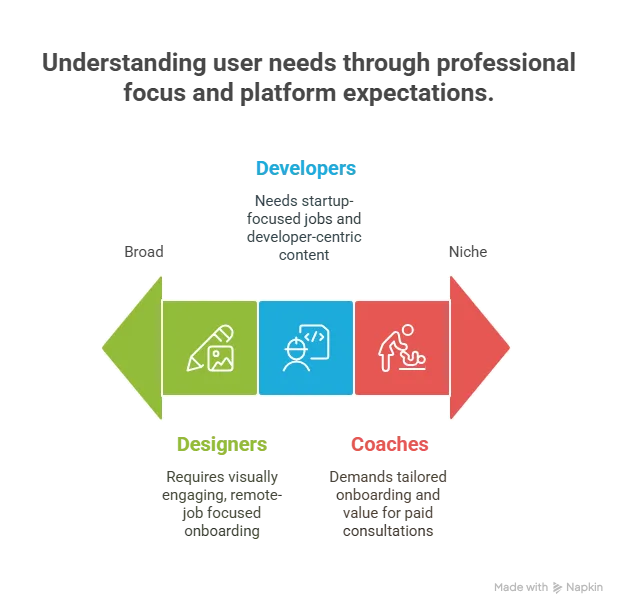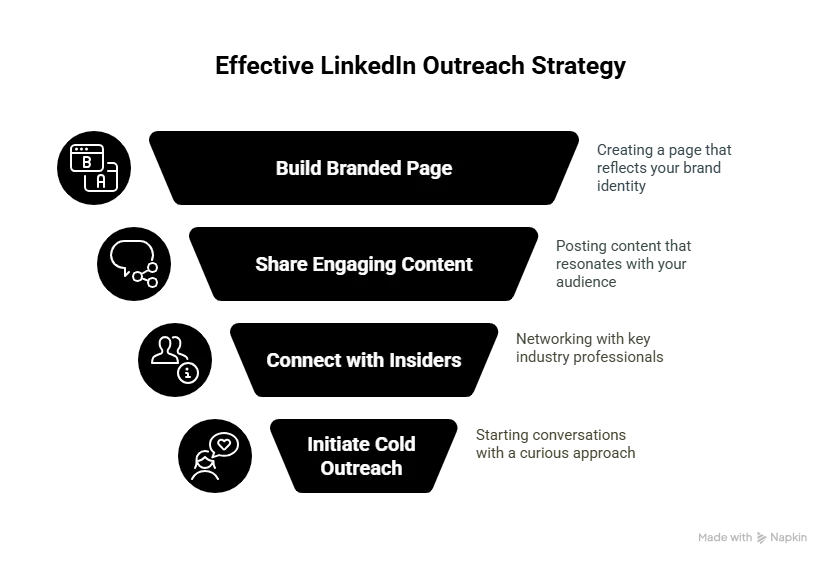You’ve built your app, polished the UX, and even onboarded a few early users. Maybe it’s a LinkedIn alternative, a job-matching platform for creatives, or a niche space for remote-first companies. You hit “launch”… and now comes the moment of truth. Will people join? Will they actually use it? Will employers post jobs? Will professionals engage?
Professional networking platforms are tricky beasts. You’re not just launching a product—you’re launching a professional ecosystem. It’s a double-sided marketplace where credibility is currency, and the experience has to feel worth their time. Users don’t just want a feed—they want value, visibility, and career growth.
At Miracuves, we understand the unique challenges of launching LinkedIn clone apps and professional and job platforms. Building it is step one. Marketing it effectively post-launch? That’s where the real strategy kicks in.
Define a Clear User Archetype

Not all professionals think—or click—the same. A platform for Gen Z freelancers looks very different from one for Fortune 500 executives. So, before spending a dime on ads or outreach, get laser-focused on your user archetype.
Who is this platform for? Graphic designers looking for remote gigs? Developers hunting for startup jobs? Coaches offering paid consultations? Each of these groups needs tailored onboarding, tailored content, and tailored value.
Craft your messaging accordingly. A job board for artists shouldn’t look like a corporate dashboard. Speak your users’ language.
Seed the Platform with Quality Profiles
Nothing kills user interest faster than an empty platform. When professionals join your app, they need to see value right away. That value often looks like other people’s activity: polished profiles, relevant job posts, insightful content, active groups.
So, seed the platform pre-launch. Invite a small cohort of professionals to create full profiles. Help them, if needed—offer profile optimization tips, copy suggestions, and even profile photo sessions if you’re local. A populated feed builds trust, and trust builds traction.
Don’t forget to seed companies too. Showcase early job posts from hiring startups or friendly partners. People go where the opportunities are visible.
Read More : Most Profitable Job & Career Apps to Launch in 2025
Build Authority Through Content and Thought Leadership
A networking app without content feels static. You need activity—and one of the best ways to jumpstart it is with thought leadership.
Host career-focused AMAs with coaches or founders. Start a “Career Tips” group with daily posts. Highlight successful freelancers or remote workers who found gigs via your app. Post interview tips, resume templates, or niche industry insights.
If you position your app as a learning hub, not just a job board, users will return even when they’re not actively job hunting.
Incentivize Referrals From Trusted Voices
Professionals trust recommendations from their peers—especially in career spaces.
Set up a referral system. But don’t just reward users with cash or points—offer value they actually want. Examples:
- Early access to premium features
- Free consultation from a career coach
- Visibility boosts for their profile
Even better, partner with bootcamps, universities, or coworking spaces. Let them offer your app as part of their post-grad or member perks. These are high-trust environments—and the endorsement carries weight.
Read More : How Much Does It Cost to Build a Job Board Marketplace Platform from Scratch?
Smart LinkedIn Outreach—Done Right

You’re not competing with LinkedIn. You’re targeting a niche that LinkedIn overlooks. That means LinkedIn can actually be a powerful tool for outreach.
Build a branded page. Share behind-the-scenes content, platform updates, and user stories. Use your personal founder account to connect with industry insiders, HR managers, or community leaders—especially those you’ve identified through a curated HR mailing list.
And when doing cold outreach—ditch the hard sell. Lead with curiosity. “I noticed you lead hiring at X—would love to hear what tools you’re using to connect with candidates right now.” Relationship-first always wins.
Run High-Intent, Targeted Campaigns
When it comes to paid marketing for professional apps, generic won’t cut it. Skip the “Join the next big thing in networking” ad copy. Instead, go niche:
- “Get discovered by top tech startups hiring remote.”
- “Find freelance gigs that value your creative work.”
- “Connect with other professionals in biotech R&D.”
Run ads on platforms where your audience already learns and grows—Twitter, Reddit, niche Slack groups, or industry newsletters. And segment carefully. An ad targeting remote software engineers in India shouldn’t lead to the same landing page as one targeting executive coaches in the US, especially when you’re also leveraging tools like a CEO email database to refine your outreach.
Gamify Profile Completion and Activity
Want users to stick around? Make the platform feel like progress.
Give users a profile strength score. Unlock badges for engaging—posting, joining discussions, referring peers. Create milestone messages: “You’ve connected with 10 new professionals this week!” or “You’re in the top 5% of most active creators.”
It’s a psychological loop—reward effort, highlight progress, and show them they’re building professional capital just by showing up.
Encourage Real-World Results and Share Them
Ultimately, users want jobs, clients, or collaborations. So when that happens—even once—share the story.
Feature successful users. “How Sanya landed a UX role through [App Name]” or “Why 5 startups hired their dev team using [App Name].” These stories are marketing gold. They offer social proof, emotional resonance, and user validation in one punch.
Even small wins count. Someone found a mentor? Got a freelance gig? Made their first paid webinar sale? Shout it out.
Read More : Ultimate Guide to Starting a Job Board Platform App Business
Track the Right Metrics
DAU and sign-ups are vanity metrics unless they tie to engagement and outcomes. Track:
- Profile completion rates
- Number of connections per user
- Posts created per week
- Job applications sent
- Conversion to paid users (if freemium model)
These KPIs tell you where users are getting stuck and where your onboarding or UX might need tweaking.
Use tools like Mixpanel, PostHog, or Amplitude to monitor and experiment in real-time.
Final Thoughts
Professional networking platforms don’t grow because of buzz—they grow because they deliver real, career-changing value. The post-launch marketing path is less about virality and more about credibility, results, and community.
Focus on your niche. Support your early users. Amplify every win.
At Miracuves, we help innovators launch high-performance app clones that are fast, scalable, and monetization-ready. Ready to turn your idea into reality? Let’s build together.
FAQ
Still have questions about marketing a professional networking app? Let’s clear them up.
How do I attract both professionals and companies to a new platform?
Start with one side—usually professionals. Once you have active, high-quality users, companies will follow. You can also manually onboard both sides early on.
How do I compete with LinkedIn?
You don’t. You specialize. Go deep into a niche—freelancers, creatives, remote work, startups—and build community where LinkedIn is too broad.
What’s a good early growth tactic?
Partner with communities (Slack groups, co-working spaces, bootcamps) and offer them tailored onboarding or access.
How do I get users to fill out full profiles?
Gamify it. Show profile strength, offer completion rewards, and highlight the benefits (more visibility, better matches).
Can I start monetizing early?
If you offer real value (e.g., better exposure, exclusive jobs), yes. Just make sure your free tier is still valuable enough to attract users.
Does Miracuves help with job platforms specifically?
Yes. We’ve built and scaled LinkedIn clones and niche networking apps for clients across multiple verticals—from tech to creatives to wellness professionals.
Related Articles
- Best Indeed Clone Scripts in 2025: Features & Pricing Compared
- Best Job Portal Clone Scripts in 2025: Features & Pricing Compared
- Best Upwork Clone Scripts in 2025: Features & Pricing Compared
- Best LinkedIn Clone Scripts in 2025: Features & Pricing Compared
- Best Fiverr Clone Scripts in 2025: Features & Pricing Compared








